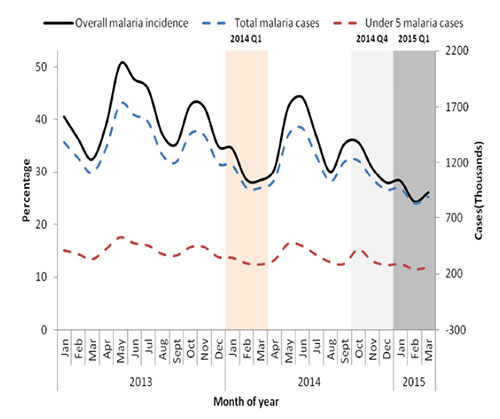Uganda is making great strides in reducing its malaria burden. According to preliminary results from the 2014–2015 Malaria Indicator Survey, the prevalence of parasitemia in children under five years of age has declined by 55 percent, from 42 percent in 2009 to 19 percent in 2014. This finding is complemented by the country’s health management information system (HMIS) data, which shows that the malaria burden is the lowest it has been since 2013.
These impressive results are due, in large part, to investments in malaria prevention, such as the recent insecticide-treated net (ITN) mass distribution campaign and implementation of indoor residual spraying (IRS). Upon completion of the mass campaign, focus is shifting to distribution of ITNs via routine channels (such as antenatal care [ANC]) and improvement of use. Based on evidence from the HMIS and from partners, such as the Uganda Malaria Surveillance Project, which showed that IRS had contributed to low malaria prevalence in select districts, in September 2014, Uganda shifted IRS to seven new districts, and in May 2015, phased in seven additional districts. The malaria burden in these 14 districts is nearly twice that of the national average, at 36 percent. Enhanced case surveillance in former IRS districts will detect upsurges in cases, and entomological surveillance will monitor the vector and provide appropriate and timely information to the national malaria control program (NMCP) and other key stakeholders.
Read the latest issue of the Uganda Malaria Quarterly Bulletin for more about Uganda’s results and malaria interventions.

